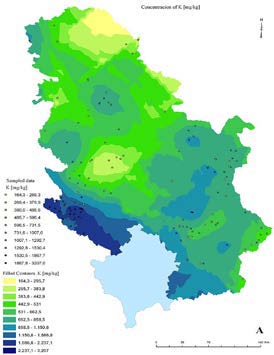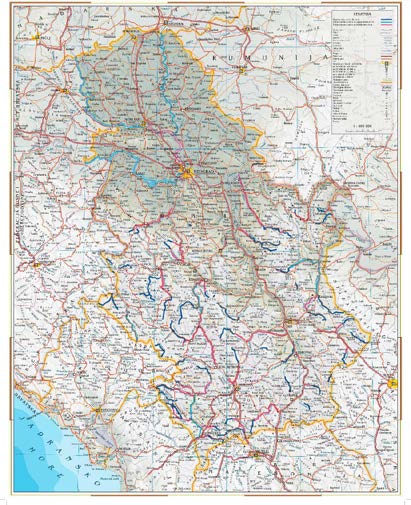Institution/Author: WWF Adria/Duška Dimović, Goran Sekulić
Together with numerous water management and nature conservation experts, WWF assessed 129 watercourses in Serbia with a total length of 9,256 km and with a watershed surface of 35,852 km2. River sections identified as the most important for conservation are presented on the map of the most valuable rivers of Serbia. The results showed that slightly more than 30% of the analysed rivers were identified as best-preserved and most valuable ones for nature protection. This clearly indicates that most of the river ecosystems have been significantly altered and disturbed, and that it is necessary to make significant efforts to keep the remaining preserved habitats from further degradation. The map, based on this data, shows which river and river courses are considered the most valuable. To determine the importance of watercourses, criteria based on data referring to hydrological and morphological characteristics, vegetation, water quality, land use and the presence of endangered fish species are combined. The process involved the collection of relevant data from the relevant institutions and their GIS analysis. The data obtained after the analysis were additionally checked with experts in the field of protection of water and fish fauna in order to obtain the final list of rivers of special importance. Rivers are firstly classified by type, and then divided into river sections. The analysed river sections are then classified in relation to the river type, habitat type and their condition. The status of river sections was evaluated in relation to five parameters: hydrology, water quality, morphology, riparian vegetation and the form of land use. Each parameter is given a certain numerical value, and in relation to the sum of parameter values, the state of the river sections is classified into five categories (very good, good, moderate, poor and bad). All river sections with very good and good condition are automatically classified as “the most valuable river sections”. The main assumption in this approach is that river segments in a very good and good condition can preserve the basic characteristics of the biodiversity of the given river and habitat type. Data on distribution of threatened fish species (listed in the IUCN red lists), endemic fish species and protected area data were used to calculate the total biological importance index (TBI) for each river section. All river sections with the index of TBI between 80-100 are designated as priority sections for conservation. Additional two parameters were analysed to gain complete insight into the condition of the watercourses, that is, representability and connectivity. The representativeness analysis adds importance to the sections with the moderate or poor status, if they represent the rare or only representatives of a given habitat type. The connectivity analysis considers longitudinal connection between the river sections that are considered as significant. This analysis aims to raise attention to the level of threats for rivers in Serbia are exposed to and to propose scientifically based methodology for their further conservation. The WWF will continue to cooperate with relevant institutions to help define these zones and ensure their comprehensive legal protection.

